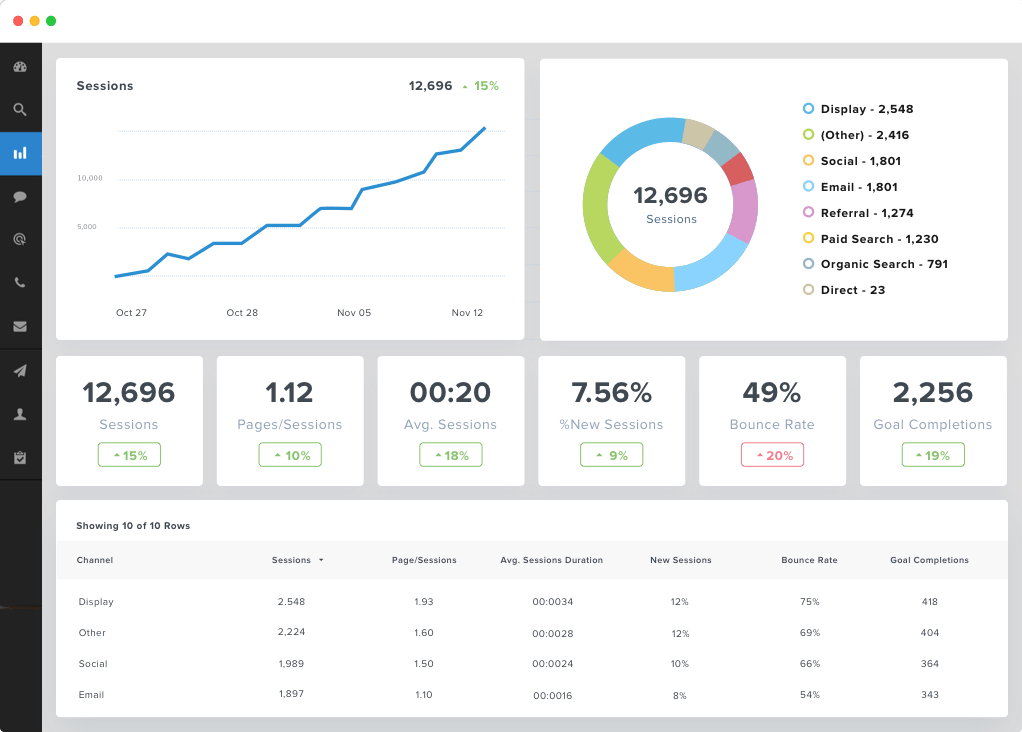1. The Foundations
Setting the right foundations is the most important step in developing a marketing strategy. Marketing is a long time process with a lot of possibilities, and it’s easy to lose your way in the process, especially when you encounter challenges and difficulties. In a B2B setting, here are the key marketing strategy foundations to focus on;Defining Goals
Having clear, realistic goals is very important in developing any strategy. If you know your goals, you can track the correct KPI(s) to evaluate your progress. This will help tremendously when you stumble upon challenges along the way. Make sure your goals are clear, specific, and realistic enough to achieve. If your goals aren’t realistic enough, you might disrupt the morale of your team in the long run. You can tackle this issue by breaking down big goals into smaller, more realistic milestones.Targeting The Right Audience
Finding the right audience for your business is easier than done, especially for B2B businesses. First, develop a buyer persona to have a clearer picture of your ideal customers. In a B2B environment, there are at least two layers of finding the proper audience: first is the companies and businesses that will be your ideal customers, and second is the key decision makers within the said company. Consider the fact that there can be multiple decision makers in a single company, and target them accordingly.Setting Up Priorities
Assess your current condition(s) to decide which actions need prioritizing. If you already have an existing marketing strategy, it is a good time to evaluate your efforts so far. You can use the classic SWOT analysis here: decide whether you will need to prioritize building your strengths, fixing your weaknesses, managing current threats, or capitalizing the available opportunities.2. Optimizing Your Website
A website is today’s equivalent to a storefront: this is where your prospects and customers can learn about your business, and this is where you can attempt to give the very best impression. While developing and optimizing a B2B website is a pretty broad subject, here are some key areas to focus on:- Make sure your website is customer-centric. Build a B2B persona, and use various customer feedback tools to test your site. The goal here is to optimize customer experience.
- Get the right balance between promoting your product/service, educating and informing your customers, and entertaining them. All three aspects must be carefully considered.
- Plan your lead generation methods ahead, and how your site can align with those methods properly.
- Track the right KPIs: setup Google Analytics goals, as well as other tracking tools that might help you.
- Showing the credibility of your site and your business in general. If a site is not working properly, it will affect customer’s perception of your business
- The site should be able to make a prospect/customer feel welcome
- Show that your business is trustworthy. More often than not, customers feel a business is shady when the site is too focused on selling
- The site should be able to provide solutions and answer customer’s questions through contents
3. Content and Inbound Marketing
The term ‘inbound marketing’ has been the buzzword of the digital marketing world in recent years. The concept is fairly simple: the digital marketing world is now so saturated it is very hard to promote your products using traditional means. How many online advertising do you see a day? How many of them do you actually care about? We are growing increasingly resistant to disruptive promotion activities. Inbound marketing, on the other hand, focuses on putting valuable information and contents for the customers, allowing the prospects to come themselves when they are looking for solutions. This is why inbound marketing is very effective because there will be less resistance. Also, inbound prospects are generally more ready for a conversion, because they are the ones actively searching for a solution. So, the center of inbound marketing is content, and here are the key areas to focus on:- Use the available data of your ideal audience you’ve figured out in step one to plan your keywords and topics.
- Develop an editorial calendar listing the planned topics, forms of media, and distribution channels. Ideally, you should have a year worth of editorial calendar, but you can start with a 3-month calendar.
- Create a centralized place on your website to list all your contents. This will also help Google when indexing your site for SEO purposes.
- Figure out how you will promote your contents. If you are planning to use influencer marketing, reach out to the right influencers.
4. Search Marketing
While search volumes are generally lower in the B2B environment, it is still a pretty huge market. There are two aspects of search marketing:- Search Engine Optimization (SEO), which attempts to organically improve our site rank in the search results.
- Pay-per-click (PPC) marketing, which is advertising our product/brand when our audience is searching for a certain keyword
- Remember the fact that there can be different decision makers in your target companies. Each role might require different target keywords, so you will need to group target keywords by these different roles.
- Assess the difficulty of each keyword accordingly, and decide whether you will invest in PPC marketing.
- Utilize PR and outreach programs to build quality backlinks.
- Align your content marketing plan (discussed in step 3) with your search marketing to properly target the focus keywords.
5. Social Media Marketing
Social media channels are often overlooked by B2B businesses. Yet, it is actually a very powerful lead generation method, as proven by these statistics. It’s true, however, that we will need different approaches to a B2B social media marketing compared to a B2C setting:- LinkedIn is where most of your prospects are, so you may want to put more emphasis on the platform. You can use LinkedIn to distribute contents, reach out to influencers of the industry, and you can also use the LinkedIn Ads to promote your business.
- Use all the available social media channels to interact with your customers. Try to answer every question and address the bad reviews. Not many businesses do this, so simply by doing this, you are ahead
- There are many available tools that can help you. Use them to your advantage
- Use Google Analytics and other tools to monitor your progress
6. Lead Nurturing
Studies suggested that 96% of visitors who come to your website are not ready to convert just yet.The B2B sales cycle can be really long and complicated, and so a lead nurturing strategy is necessary to maximize the chance of conversion. Again, here are key areas to focus on:- Use prominent but proper call-to-action (CTA) buttons across your site, as well as other available channels. Sometimes, conversion doesn’t happen because you don’t give them a clear path
- Take advantage of various tools to automate the lead nurturing process. They can save both money and time.
- Your strongest lead nurturing weapon is your contents. Publish valuable contents regularly and distribute them through your email marketing and other channels.



